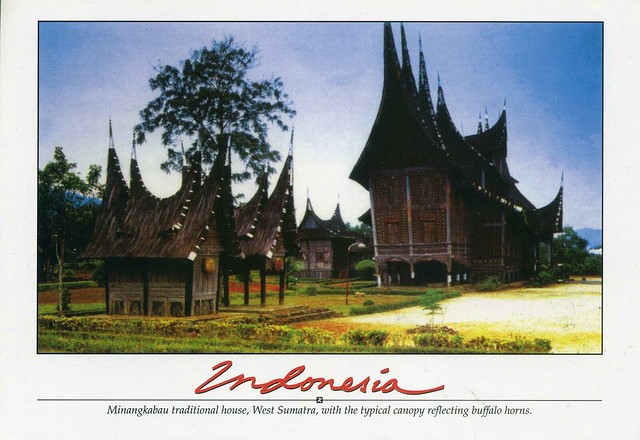
The Minangkabau ethnic group (also known as Minang or Padang) is indigenous to the highlands of West Sumatra, in Indonesia. Their culture is matrilineal, with property and land passing down from mother to daughter, while religious and political affairs are the province of men (although some women also play important roles in these areas). Today 4 million Minangs live in West Sumatra, while about 3 million more are scattered throughout many Indonesian and Malay peninsula cities and towns.
The Minangkabau are strongly Islamic, but also follow their ethnic traditions, or adat. The Minangkabau adat was derived from animist beliefs before the arrival of Islam, and remnants of animist beliefs still exist even among some practicing Muslims.
Rumah gadang (Minangkabau: 'big house') are the traditional homes of the Minangkabau. The architecture, construction, internal and external decoration, and the functions of the house reflect the culture and values of the Minangkabau. A rumah gadang serves as a residence, a hall for family meetings, and for ceremonial activities. With the Minangkabau society being matrilineal, the rumah gadang is owned by the women of the family who live there - ownership is passed from mother to daughter.
The houses have dramatic curved roof structure with multi-tiered, upswept gables. Shuttered windows are built into walls incised with profuse painted floral carvings. The term rumah gadang usually refers to the larger communal homes, however, smaller single residences share many of its architectural elements.



 Maroon
Maroon 










































































































































































No comments:
Post a Comment